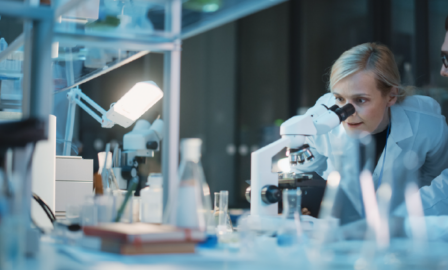2025 Diagnostics Trends
Clarkston’s team of life sciences consultants have highlighted the top diagnostics trends that businesses should consider. See an excerpt of the trends report below, and read all 5 trends for 2025 by downloading the full report here.
2025 Diagnostics Trends
The rapid changes in the diagnostics industry are being driven by the growing need for non-invasive procedures, environmental initiatives, and technological advancements. Diagnostics are essential to modern healthcare, from liquid biopsies that revolutionize cancer detection to wearable technology that allows for continuous health monitoring. A future where individualized, effective, and environmentally friendly healthcare solutions are becoming more widely available is being shaped by emerging trends like AI-driven diagnostics, green manufacturing techniques, and point-of-care technologies. Healthcare professionals and business executives who want to improve patient outcomes and maximize the utilization of healthcare resources must comprehend these changing patterns.
Trend #1: Minimally Invasive Diagnostics Take Priority
By providing ways to identify illnesses and track health conditions without the need for invasive treatments like tissue biopsies or surgery, non-invasive diagnostics are revolutionizing the healthcare industry. The biological markers found in bodily fluids that are readily accessible, including blood, urine, or saliva, are analyzed in these diagnostic procedures.
Among the most significant developments are liquid biopsies, which identify circulating tumor DNA (ctDNA) in blood, enabling real-time tracking of the course of cancer, the effectiveness of treatment, and even the early identification of tumor alterations without the need for tissue samples. Minimally invasive prenatal testing lessens the need for more invasive prenatal procedures like amniocentesis by using maternal blood to check for genetic abnormalities in the fetus, such as Down Syndrome. Continuous glucose monitors (CGMs) and wearable technology offer non-invasive, real-time data to help manage diabetes and check heart health via biosensors and monitors in metabolic and cardiovascular health.
By eliminating the discomfort and dangers of intrusive treatments, non-invasive diagnostics not only increase patient comfort but also facilitate ongoing monitoring, which enables early illness identification and prompt action. With the development of technology, these diagnostics will be further combined with AI-powered tools and wearable health devices to provide more precise and individualized health insights. Their expanding uses are transforming prenatal care, chronic illness treatment, and oncology.
Trend #2: Sustainability in Diagnostics Through Green Manufacturing
A developing trend in diagnostics is “green manufacturing,” which tries to lessen the environmental impact of making instruments and gadgets for medical use. This strategy aims to reduce waste, energy use, and the use of hazardous compounds in industrial processes in order to make them more environmentally friendly. Greener practices are essential in the healthcare industry because of the large amount of waste generated, especially from electronic equipment and single-use plastics.
Using environmentally friendly materials, such as recyclable or biodegradable plastics, in diagnostic consumables like pipettes and vials is a crucial component of green production. This helps minimize the environmental impact of disposables and lessens dependency on polymers derived from petroleum. Also, energy-efficient production techniques are being used, such as the usage of renewable energy sources like solar and wind power and low-energy machines.
Waste reduction, in which producers streamline operations to produce less trash and recycle industrial byproducts, is another crucial factor. Green chemistry and other similar techniques assist with reducing the amount of hazardous chemicals used in production, improving worker and environmental safety. Also, firms are increasingly focusing on developing a sustainable supply chain, procuring raw materials locally and ensuring that suppliers adhere to eco-friendly practices. These strategies support sustainability in healthcare and lessen the environmental impact of diagnostic production, paving the way for a more environmentally friendly future for the sector.
Continue reading by downloading the full report below.
Download the Full 2025 Diagnostic Trends Report Here
Read last year’s Diagnostic Trends Report here.
Subscribe to Clarkston's Insights
Contributions from Zak Mohamed



